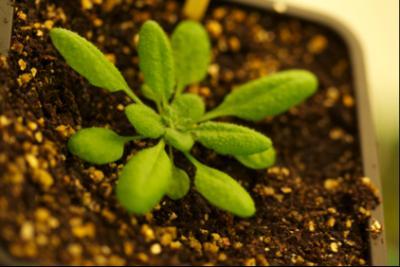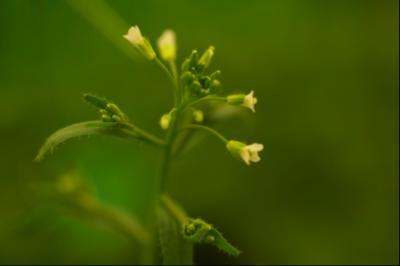Zinc is essential for optimal plant growth and development but when high levels of the metal are present in the soil, it can become toxic to the plant. Consequently, plants need to trigger mechanisms capable of coping with that stress. Researchers from the Instituto Gulbenkian de Ciência (IGC) have now discovered a novel genetic mechanism that protects plants from toxic zinc levels. The research team, led by Paula Duque, identified a gene that produces a protein capable of sequestering zinc inside the cells of the root. In the presence of high levels of zinc, this gene undergoes a special processing which ensures more production of the protecting protein. These findings, published in the latest edition of the scientific journal PLOS Genetics*, open new avenues for increasing plant tolerance to zinc.
ZIF2 is the name of the novel gene discovered by Paula Duque's team. By undergoing genetic and cell biology studies in the plant model Arabidopsis thaliana, the researchers found that the ZIF2 gene produces a protein that transports zinc ions into a 'compartment' (the vacuole) of root cells, thus preventing its dispersion to other plant organs. In order to study if the ZIF2 protein was protecting the plant against toxic levels of zinc, plants either lacking ZIF2 or containing increased levels of the protein were generated. The researchers observed that, in the presence of high levels of zinc, plants without ZIF2 were less tolerant to the metal; their roots grew shorter, the production of chlorophyll was impaired, and ultimately the plant's biomass was reduced. Conversely, plants expressing more ZIF2 protein were able to cope better with high levels of zinc; roots grew longer, and more chlorophyll and biomass were produced. These results established that ZIF2 was important for plants to handle toxic zinc levels.

This is Thale cress (Arabidopsis thaliana), the plant model used in this study.
(Photo Credit: Raquel Carvalho (IGC))
While conducting the genetic studies described above, the research team observed that the ZIF2 gene was producing more than one intermediary molecule of ribonucleic acid (RNA) prior to protein synthesis. When a gene is activated, an RNA molecule that serves as a messenger to translate the genetic information into protein is generated. The appearance of more than one RNA molecule may result from a processing mechanism called alternative splicing that removes different segments from within the RNA, generating molecules with distinct sizes. Therefore, Duque's team set out to investigate whether two ZIF2 RNA molecules played a different role in the plant's protection against zinc. They discovered that, even though both molecules were leading to the production of the same ZIF2 protein, the longer form would result in more protein being produced than the shorter RNA molecule. Intrigued by these results, the researchers investigated the underlying genetic mechanism. They found that the two ZIF2 RNAs arose from an alternative splicing event in a region of the RNA that does not affect the protein 'message' but was nevertheless controlling the production levels of the ZIF2 protein. The research team further discovered that zinc was a trigger for this processing event. In the presence of higher levels of zinc, that region of the RNA molecule was not removed, generating the longer form of the RNA molecule. This would result in more levels of ZIF2 protein produced and consequently confer more plant protection against zinc.
Paula Duque says: "We are amazed with our results. Plants have developed a very 'clever' genetic mechanism that allows them to protect plants from toxic levels of zinc. It is the zinc per se that triggers more production of a protein that then acts to retain this heavy metal in the root of plants, avoiding its toxic effects on leaves, flowers, and other aerial parts of the plant. Why this genetic mechanism occurs we don't know, but we hypothesize that it allows plants to save energy, by only producing more levels of the protein when it is really required."
Estelle Remy, a post-doctoral researcher at Paula Duque's laboratory and first author of this study, adds: "We further observed that the ZIF2 RNA region that undergoes this alternative processing can be used to increase the expression of other proteins. This potentiates our results not only to be used in strategies for crop biofortification, but also for the treatment of soils contaminated with zinc."

This is Thale cress (Arabidopsis thaliana), the plant model used in this study.
(Photo Credit: s: Raquel Carvalho (IGC).)





Comments